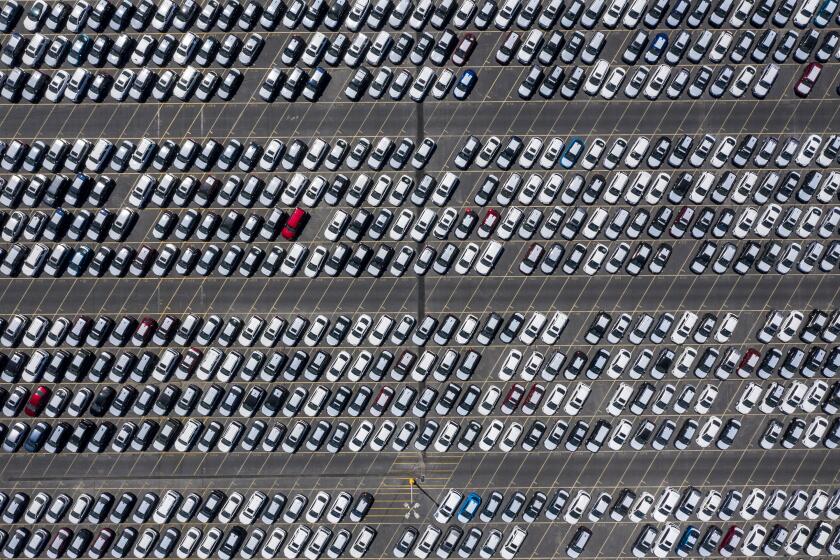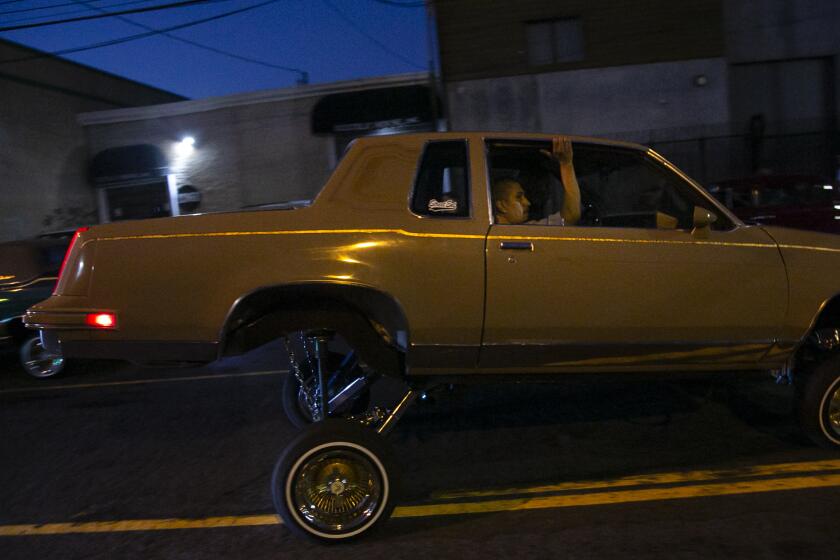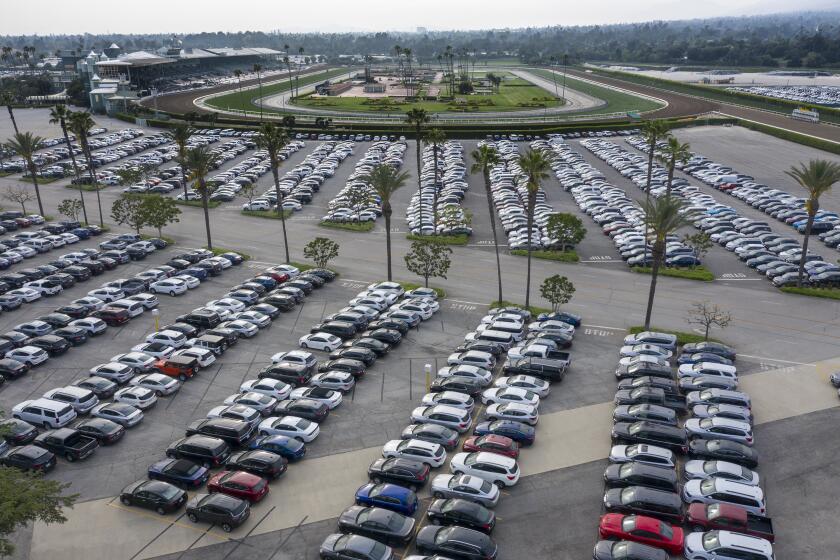We’re souping up our rides. The neighbors are furious
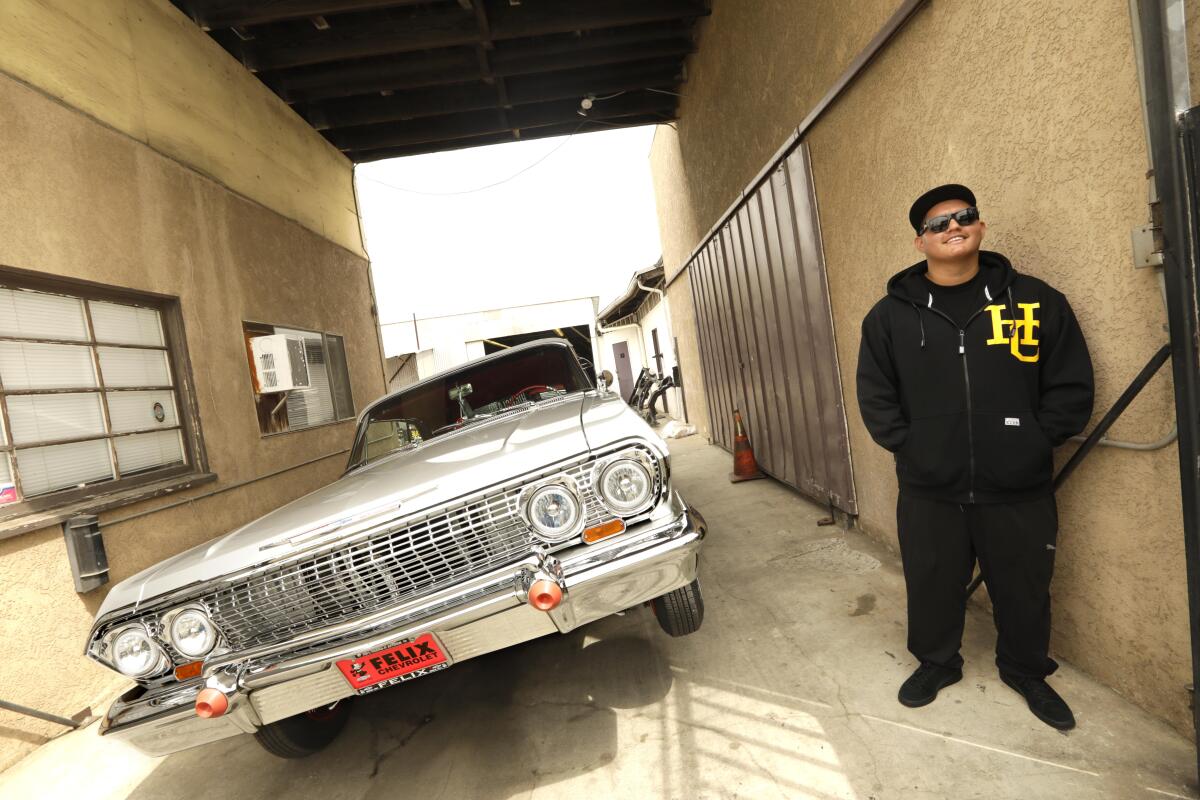
- Share via
It’s not your imagination. That driver at the stoplight is revving his engine so loudly it can set off car alarms. Then he roars off as the signal turns green, even if it’s just to the next stoplight.
Like some sort of pandemic-inspired primal scream, this flooring-the-pedal thing is happening all over. That’s because a global semiconductor shortage is making new cars scarce, and low inventory is making used cars expensive, so people with time and money are sinking them into their older rides — and some are making them as fast and loud as possible.
Sales of parts to make vehicles faster, flashier and sometimes much noisier were a major contributor to the record $47.9 billion 2020 sales year for California’s aftermarket automotive industry, the largest of its kind in the U.S., according to data from the Specialty Equipment Market Assn.
For enthusiasts, spending money on their dream projects has represented a psychological refuge from the pandemic’s isolation and uncertainty, SEMA Vice President Mike Spagnola said.
“While people couldn’t travel, while they couldn’t spend money in hotels and on food, because they couldn’t get out and do concerts and all those sorts of things, men and women put some time and effort into their cars and trucks,” he said.
A unique set of circumstances brought on by the pandemic has roiled the used car market, leading to an inventory shortage that has sent prices soaring.
Jonathan Rodriguez was looking for something to break up the pandemic’s isolation and monotony.
The 20-year-old Long Beach resident found it in a 1963 Chevy Impala Super Sport lowrider, which can be heard and felt before it comes into view, courtesy of a 400-horsepower, 6.0-liter General Motors LS2 V8 Corvette engine. Mindful of the car’s ability to roar, Rodriguez said he’s careful to drive sedately in residential neighborhoods so that he doesn’t disturb people.
“I was like, ‘Man, I don’t know when this lockdown is going to be over,’ but it’s giving us extra time to get our rides to where we want them to be,” Rodriguez said. “I got a lot of things done that I wouldn’t have probably gotten done if it wasn’t for the lockdown.”
Rodriguez re-chromed the car’s bumpers, installed a new sound system, new headlights, a new drive shaft, new suspension coils and made improvements to the hydraulics that lift the car to various heights and angles that, to a novice, just wouldn’t seem possible.
Much of the work was done around the corner from the family home at Speedy’s Metal Finishing, under the tutelage of his father, Luis “Speedy” Rodriguez, a legend among California aftermarket businesses that cater to lowriders. As restrictions eased, the car was further burnished by a variety of other specialists around Southern California.
“Speedy” has been a pretty demanding mentor; every time Rodriguez thought the car might be finally complete, he was told no, it’s not. The attention to detail apparently paid off; Rodriguez just sold his car to a Florida bodybuilder for $150,000. He says he hopes it’s driven a lot and not just used for show.
“She’s meant for the streets, never too pretty to get dirty,” he said with a laugh.
You know the slow parade of classic, souped-up lowrider cars with hydraulics that roll down the street bouncing to music? In Southern California, it’s a full-on family tradition that provided a much-needed distraction during the pandemic.
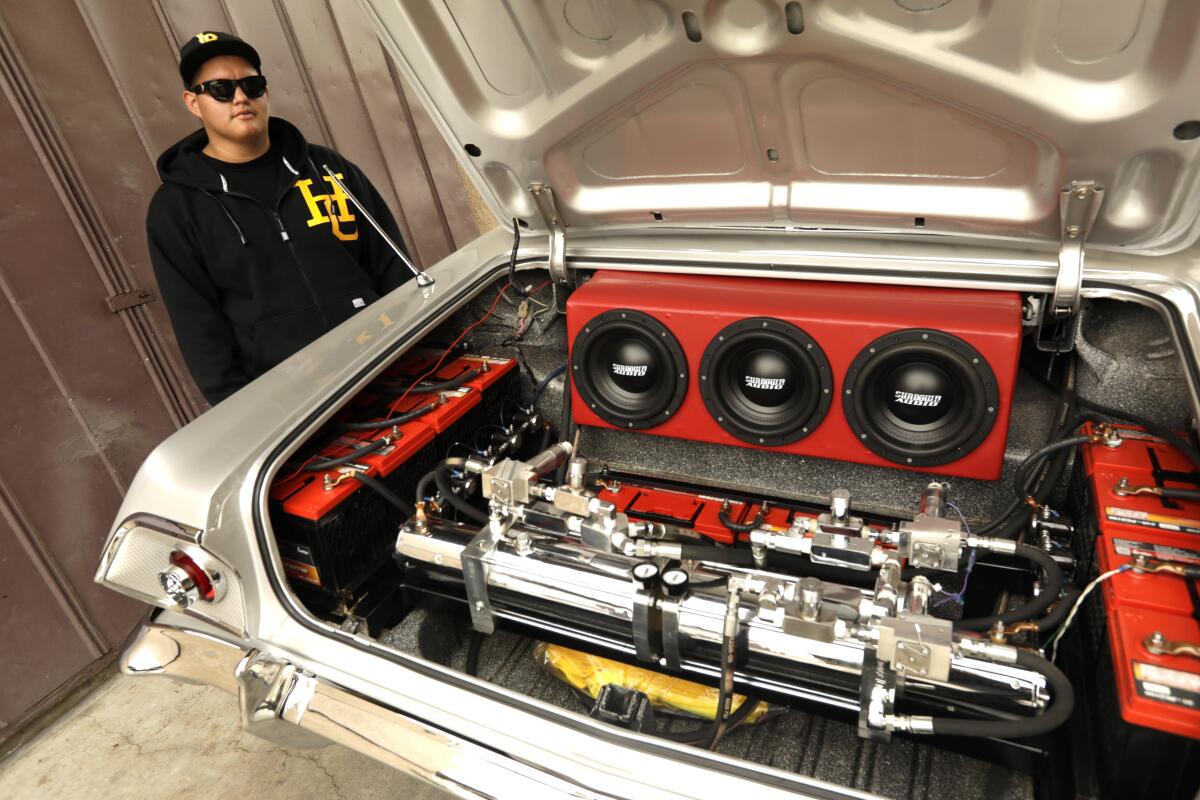
Aftermarket professionals like the Rodriguez family and weekend hobbyists are pretty peeved with lockdown street racers who are making them all look bad. Pandemic restrictions have brought a sharp increase in drivers letting off some automotive steam in dangerous exhibitions fueled by social media.
The California Highway Patrol responded to nearly 26,000 street racing calls last year, up nearly 16% from the year before. In August, four people were killed in separate incidents in Burbank and Riverside when street racers lost control of their cars.
The California Legislature last week voted to allow judges to issue driver’s license suspensions of up to six months to anyone participating in so-called sideshows, which the measure defines as two or more vehicles blocking traffic to performing vehicle stunts, speed contests or reckless driving for an audience. That’s the same penalty that already applies to illegal street racing, which has surged during the pandemic.
“I authored AB 3 in response to what my local law enforcement officials conveyed as a growing safety issue in our community and across the state,” said Assemblyman Vince Fong, a Republican representing Bakersfield, where last year police received more than 6,000 calls about illegal street racing. “Since AB 3’s introduction, families broken apart by sideshows and illegal street racing crashes have reached out and even traveled to the Capitol to share heartbreaking stories of their loss.”
Lawmakers in Los Angeles and other cities are being pressed to expand the number of speed bumps, traffic circles and other measures to slow cars down. “Noise cameras” are popping up in New York, Florida and Britain to crack down on loud exhaust systems.
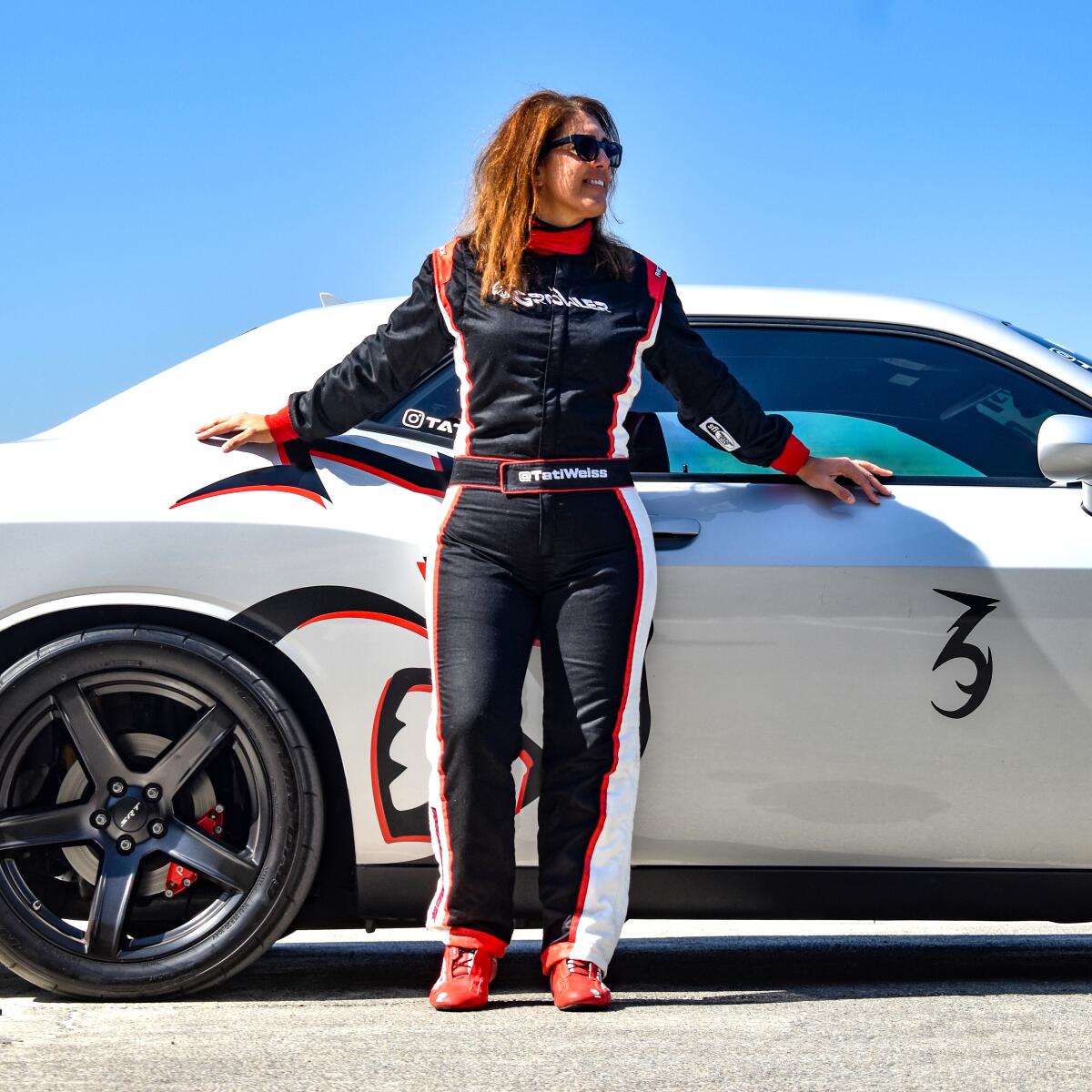
“A lot of people are taking it to the streets, and I’m really against street racing,” said Tatiana Weiss, 49, a Pacific Palisades real estate broker who used to drive an absurdly fast 485 horsepower Dodge Challenger R/T Scat Pack. Then, like some real life character in the “Fast and Furious” movie franchise, she decided it wasn’t fast enough.
“I got called out a lot, but I will not race on the street. ‘You want to bet me some money that you’re faster?’” she’d say. “‘Meet me at the track and let’s do it.’”
On a medium called the City-Data.com Forum, a national platform for the discussion of local issues, the noise debate is aired out regularly.
“For some of us, the sounds of a powerful engine make us happy, and the sound in a tunnel or echoing off the buildings is enjoyable,” said one member.
“The sound of a V8 engine is stress relief for me and I like to hear it,” said another.
But irate people weary of the noise have had enough.
“Just yesterday something drove by and it was so loud my ears were splitting and I know it had to be hundreds of feet away from me. I’m gobsmacked at how loud some cars are,” one member wrote.
An ongoing chip shortage has reduced new car inventory, resulting in a rental car shortage that has made travel more difficult and more expensive. Expect a rental car that might be older -- if you can find one at all.
David Barnes, a 59-year-old Southern Californian who works in industrial security, said he doesn’t really understand the push toward ever larger amounts of horsepower and loud exhausts. But when he went shopping for his 19-year-old Ford F-250 pickup with 191,000 miles on the odometer, Barnes got the sticker shock of his life.
“I looked at the new trucks and everything I would have wanted to have a newer version of what I have now,” Barnes said, “and I was going to be looking at a truck that was going to cost $80,000 to $100,000.”
He turned instead to California aftermarket performance parts specialist Gale Banks Engineering in Azusa.
Barnes’ truck spent a week at Banks’ garage, where a new cold air intake, a new exhaust system and a replacement intercooler was installed along with a turbocharger upgrade. Banks’ mechanics also added a new electronic controller for the truck’s transmission. The cost for the makeover, Barnes said, came out to a very reasonable $10,000. The verdict: better than a new version of his old truck.
“This was a no-brainer actually,” Barnes said. “I picked the truck up from them, and I was a little timid about it at first. And I got to tell you, I thought, ‘Let me light this thing up,’ as I’m driving away from their facility. It was like, ‘OK, this is like brand new.’ ”
Gale Banks Engineering is having its best sales year ever, said Banks, 79. The pandemic isolation, he said, has inspired a lot of people to overhaul their old recreational vehicles, giving them their own bubble for travel. The other big business these days are automotive makeovers of older vehicles.
“They’re gravitating to exhaust systems because the bang for the buck is really big. By that, I mean, it increases the fuel efficiency and the mileage for a very affordable price,” Banks said.
In July, Carparts.com Inc., reported a quarterly sales record of $157.5 million, up 32.5% from the same period a year earlier. The Torrance company, which sells more than 100,000 types of auto parts and accessories nationwide, has posted six straight quarters of sales growth, which Chief Executive Lev Peker attributed to the nation’s aging vehicles.
Peker said that the average age of his customers’ vehicles is more than 12 years, the highest it’s ever been.
“It tips right into our sweet spot, which is the 6-year- to 14-year-old vehicle,” Peker said. “For us, that’s a tailwind, because it’s driving more maintenance. It’s driving more parts being purchased for those vehicles as they need repairs. So, it’s definitely driving business, and we expect this to be a tailwind for the foreseeable future as well.”
Weiss decided to take her interest in speed to a different level.
For Weiss, the lockdown period “was absolutely what skyrocketed my journey into racing 100%. And it’s funny, I didn’t realize it was a trend, that a lot of other people were using this time to work on their cars. I thought it was just me because I’d waited all my life to do something like this.”
Weiss figures she’s invested $40,000 in a Dodge Challenger Hellcat Redeye with 797 horsepower, modified for drag racing.
The perfectly nice stock driver’s seat weighed 80 pounds; she replaced it with a 12-pound racing seat. Weiss added a roll cage, a seat harness, bigger fuel injectors. The car came with Italian Brembo brakes, considered by many to be the pinnacle of braking power. Weiss said they were too heavy, and replaced them with an even more exotic brand, from Wilwood Engineering in Camarillo.
The result is something that shoves her back in her seat and takes her breath away.
“It’s like, somebody opened this door to say, you can have this exhilaration. And all it takes is going fast down the quarter-mile,” Weiss said. “It’s such a thrill, being able to beat the guy in the other lane. It’s amazing.”
Weiss was good enough to earn a role on Discovery’s reality show “Street Outlaws,” where races look illegal, but they’re run on closed streets with permits and police escorts. Still, filming usually generates plenty of noise complaints from nearby residents.
That’s why Weiss said she prefers real racetracks. There, no one but the paying spectators get to hear your car scream.
More to Read
Inside the business of entertainment
The Wide Shot brings you news, analysis and insights on everything from streaming wars to production — and what it all means for the future.
You may occasionally receive promotional content from the Los Angeles Times.
